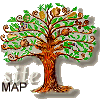| PHOTOGRAPHS
 Photographs play an important role in the "as found" documentation. They show the object in continuous tone or colour, in perspective projection and in detail limited only by the projection and in detail limited only by the resolution of the lens and paper. They are recognized as both primary method of documentation and as supplemental record to the "as found" drawings. It is for this latter purpose that photos are considered here. Photographs play an important role in the "as found" documentation. They show the object in continuous tone or colour, in perspective projection and in detail limited only by the projection and in detail limited only by the resolution of the lens and paper. They are recognized as both primary method of documentation and as supplemental record to the "as found" drawings. It is for this latter purpose that photos are considered here.
 In the usual course of an "as found" survey, black and white photographs are taken at an early stage because they are particularly useful in preparing the drawings. Towards the end of the survey, more photographs are taken to full in gaps in coverage and to show more carefully composed views. The following are major uses of photographs: In the usual course of an "as found" survey, black and white photographs are taken at an early stage because they are particularly useful in preparing the drawings. Towards the end of the survey, more photographs are taken to full in gaps in coverage and to show more carefully composed views. The following are major uses of photographs:
- to record details that confirm and clarify the drawn details; for example, to show a perspective view of a detail drawn in plan and elevation.
- to record undrawn variations of a standard type
 |
- to record details that fall beyond the limits of extent coverage decided upon for the drawings; for example, condition of surfaces of jointing patterns
- to record textures and colours
- to record overall perspective views of exteriors and interiors
- to record the artifact in the context of its environs, perhaps including area outside the survey limits.
- to record artifacts and furniture associated with the building.
 The edited photographs are organized and referenced on photo plans showing camera positioning, orientation, and tilt. Figure 9 shows a format which has been successfully used for this work. The edited photographs are organized and referenced on photo plans showing camera positioning, orientation, and tilt. Figure 9 shows a format which has been successfully used for this work.
 The negatives are likewise indexed and stored in an organized manner. In contracted work, the ownership of the negatives should be established in the contract. The format in general use for photographs supplemental to "as found" drawings is 35mm. The negatives are likewise indexed and stored in an organized manner. In contracted work, the ownership of the negatives should be established in the contract. The format in general use for photographs supplemental to "as found" drawings is 35mm.
|
|








